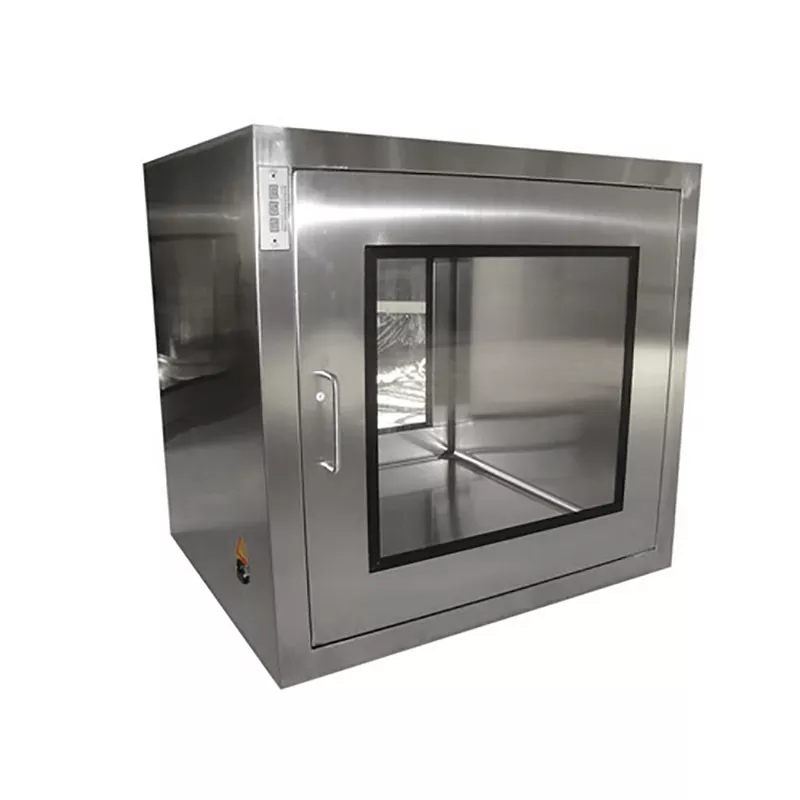
Understanding Cleanroom Pass Boxes:
Cleanroom Pass Boxes are essential components in controlled environments, enabling the transfer of materials, samples, or equipment while minimizing contamination risks. They consist of a chamber with doors on either side and are typically installed in walls or partitions separating different cleanroom areas. Cleanroom Pass Boxes are designed to maintain the cleanliness level of each side by preventing the transfer of contaminants and maintaining proper air pressure differentials.
How Cleanroom Pass Boxes Work?
Pass Boxes operate on a straightforward principle. The primary objective is to allow the transfer of materials without compromising the cleanliness of the controlled environment. Here’s how they work:
- Double-door System: Pass Boxes feature a double-door system, with doors on both the cleanroom side and the adjacent area. These doors are interlocked to ensure that only one door can be opened at a time, preventing simultaneous access to both sides.
- Airflow Control: Pass Boxes incorporate air filtration systems to maintain the desired cleanliness level. High-efficiency particulate air (HEPA) filters are commonly used to remove airborne particles, ensuring clean air circulation during material transfer.
- Pressure Differential: Pass Boxes maintain the pressure differential between the cleanroom and the adjacent area. This prevents contamination from flowing into the cleanroom by maintaining a higher air pressure on the cleanroom side.
- Material Transfer: Operators place materials or equipment in the Pass Box through the cleanroom-side door. Once the door is closed, it undergoes an air purge cycle to remove any contaminants before the adjacent-side door can be opened for retrieval.
Benefits of Cleanroom Pass Boxes:
The use of Pass Boxes offers several significant benefits for contamination control in controlled environments. Let’s explore some of the key advantages:
- Contamination Prevention: Pass Boxes effectively minimize the risk of cross-contamination by providing a controlled and enclosed transfer process. The double-door system, air filtration, and pressure differentials maintain the cleanliness and integrity of each cleanroom area.
- Convenience and Efficiency: Pass Boxes streamline material transfer processes, eliminating the need for personnel to enter restricted areas. This enhances operational efficiency and minimizes disruption to ongoing activities within the cleanroom.
- Versatility: Pass Boxes are available in various sizes and configurations to accommodate different types and sizes of materials or equipment. They can be customized to meet specific requirements, ensuring seamless integration into the cleanroom facility.
- Compliance with Standards: Pass Boxes are designed to meet stringent cleanliness and contamination control standards, such as ISO 14644 and FDA regulations. By using these devices, cleanroom facilities can ensure compliance and maintain the quality of their products or processes.
- Worker Safety: Pass Boxes minimize the risk of exposure to hazardous materials or processes, enhancing worker safety. Personnel can transfer materials or equipment safely without direct contact, reducing the potential for accidents or injuries.

